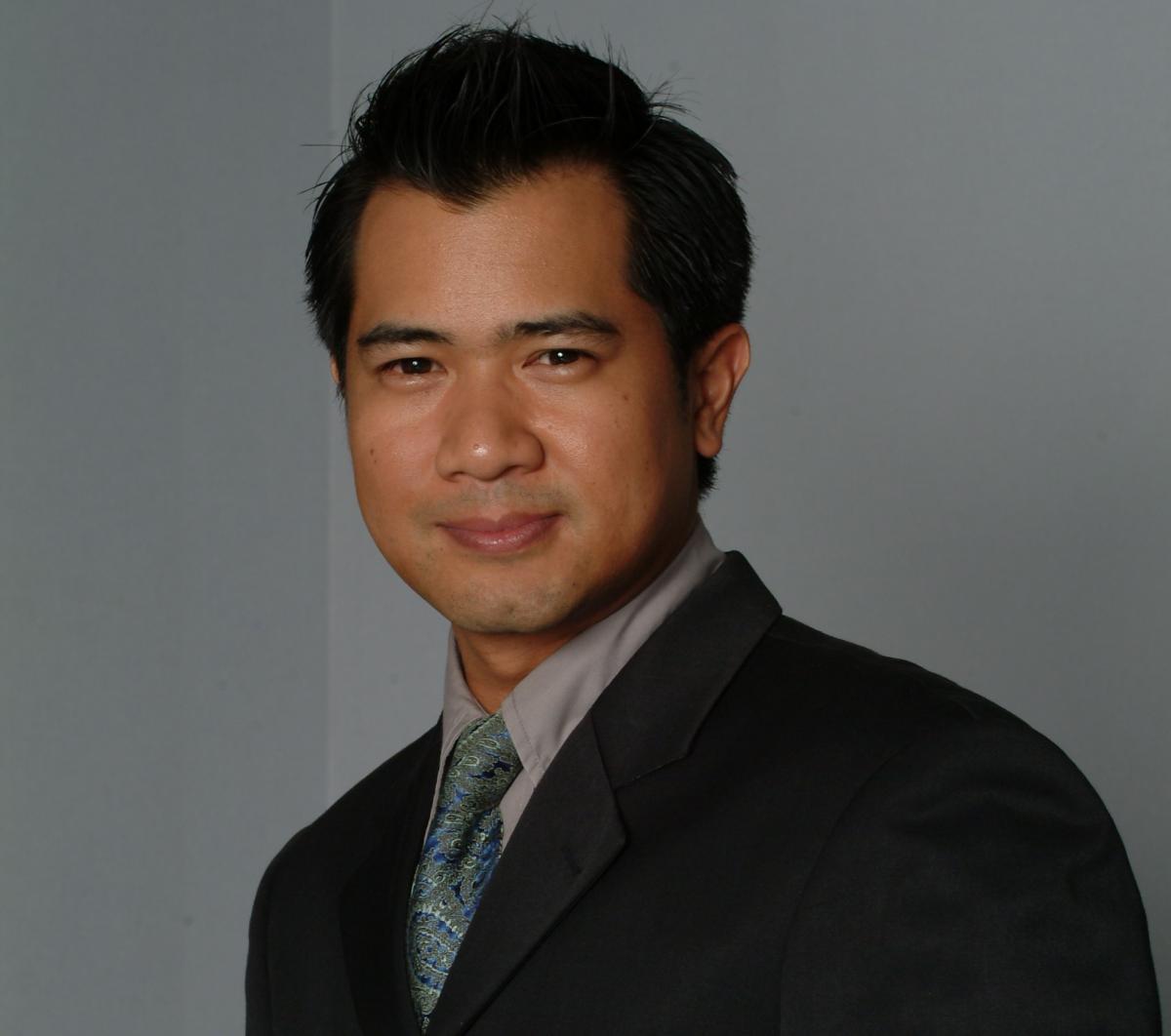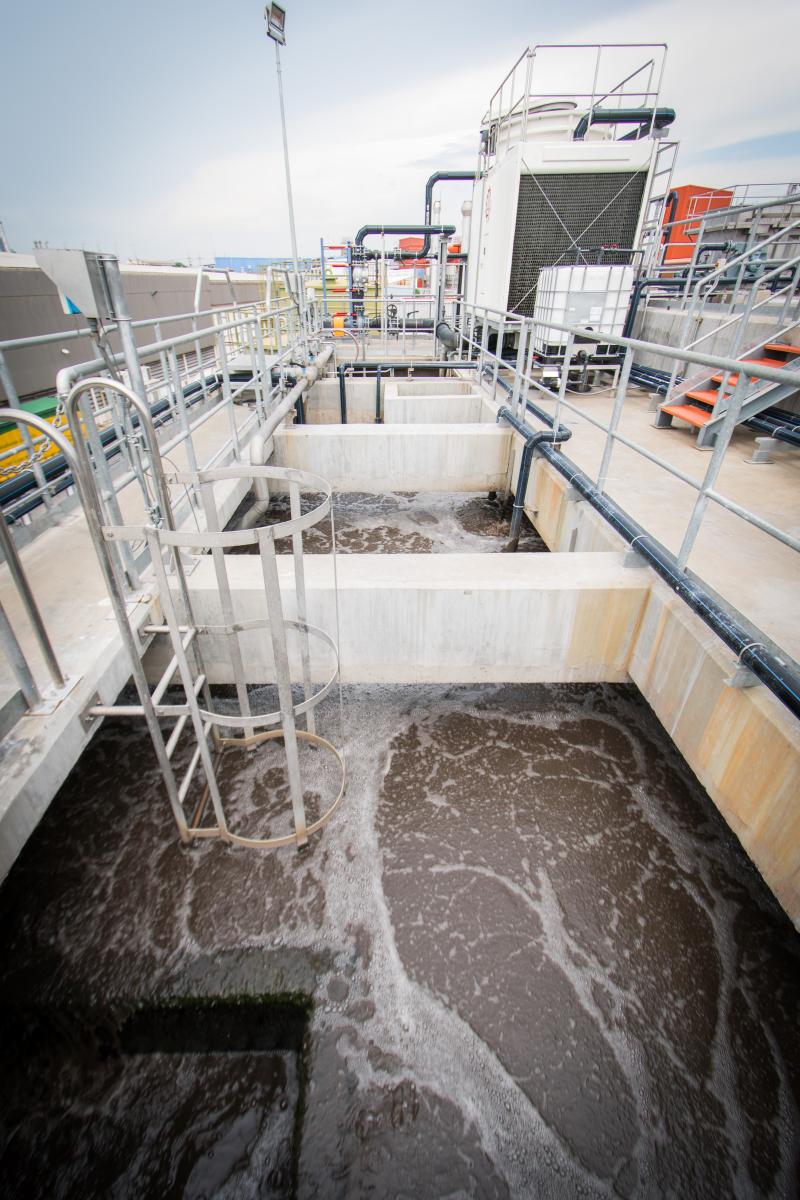WE ALL know that water is a precious commodity that we cannot afford to waste. Water consumption is expected to increase with the rise in world population. Therefore, reducing and reusing water are necessary steps in many industries including food and beverage processing. One of the challenges manufacturers face is making the investment in a system to manage water utilization. According to Michael Poonpipat, Business Development Director, Projects, Thailand, Veolia Water Technologies, there’s always a solution to fit the size of the business. We interviewed Mr Poonpipat on the solutions available to F&B companies.

Veolia helps companies manage their wastewater challenges in compliance with local discharge standards says Michael Poonpipat, Business Development Director, Projects, Thailand, Veolia Water Technologies
Food and beverage is a small segment of the separation and filtration market. In Southeast Asia, what opportunities do you see in the F&B industry?
In the food and beverage (F&B) industry, beverages that requires filtration technology include beer, wine, juice, and even water. On the other hand, water purification and wastewater treatment are examples of separation processes in F&B production. Water solutions providers like Veolia typically use membrane technologies to support the filtration and separation processes, which are often required in process water production.
BCC Research[i] suggests that the Asia Pacific F&B processing industry will generate the highest growth in the global market for membrane technologies used, and expects the region to grow at a five-year CAGR of 7.4% to generate nearly USD 3 billion by 2020. This growth comes about due to growing interest in frozen food from countries like China, India, Korea, and Japan – which subsequently drives regional demand for membrane technologies to maintain the taste and safeguard the integrity of food items.
The research finding suggests that opportunities for separation and filtration technologies are increasing in the F&B sector. As a leading provider of water and wastewater technologies, Veolia is in a good position to help Asia-based manufacturers with their water challenges. Biothane is a good example of Veolia’s technologies for the F&B industry. With a strong reference asset in APAC and more than 100 active clients, Biothane is one of the world’s leading companies in the field of biological treatment of industrial wastewater. The F&B market is very diverse – from beverage, brewing, and to food production – each manufacturer has specific needs when it comes to wastewater management. With Veolia and Biothane, F&B manufacturers can rely on our expertise to overcome water-related challenges.
Are there solutions fit for SMEs in SEA?
At Veolia, we work closely with our customers to propose the most suitable water and wastewater solutions that meet their needs and budgets. We do not subscribe to the notion of ‘one size fits all’, instead, Veolia is an advocate of customization. With over 350 proprietary technologies in our portfolio, we can tailor complete solutions to achieve top results for our customers – whether for small and medium enterprises or large multinational corporations.
Another advantage we offer our clients is that of a one-stop service. From providing consultation to designing turnkey solutions and building recommended technologies, Veolia can fully support our customers with a complete range of support.
Can you give us an example of a solution specially designed for an F&B manufacturer?
Globally, Veolia has worked with several leading manufacturers in the F&B industry, providing its advanced wastewater technologies to help customers manage wastewater challenges in compliance with local discharge standards. In our experience, multinational corporations and their subsidiaries tend to have high internal standards that are often more stringent than what’s required by local regulations. In this regard, Veolia is proud to have helped our clients to meet both internal and local environmental standards.
In China, we worked with Bacchus – a leading alcopop manufacturer – to design and build two full turnkey wastewater treatment plants for the client’s new greenfield factories in Tianjin and Chengdu. We proposed to integrate several innovative technologies, including the Biothane® Advanced Upflow Anaerobic Sludge Blanket (UASB), AnoxKaldnes™ Biological Activated Sludge™ (BAS), and tertiary and sludge treatments.
As the factory’s wastewater was high in levels of biological oxygen demand (BOD), chemical oxygen demand (COD), and suspended solids, Veolia recommended its innovative anaerobic reactor, the Biothane Advanced® UASB. This technology is renowned for its high organic loading capacity and superior sludge retention characteristics, and is particularly suitable for treatment of food and beverage-type effluents. With the UASB technology, Bacchus was ensured that its wastewater discharge would meet local regulatory standards.
Furthermore, the compact solution supports biogas production – providing Bacchus with an alternative energy source, and allowing them to maximize renewable energy utilization. That was our first partnership with Bacchus in China, and it was a successful anaerobic technology reference for Veolia in the Chinese F&B market.

The Moving Bed Biofilm Reactor (MBBR), a compact wastewater treatment solution installed at the Associated British Foods (ABF) in Thailand
As land scarcity becomes a greater challenge, how does Veolia’s solutions help companies in this regard while still ensuring low operational cost, small footprint, and energy recovery?
Land constraints have continued to be a challenge for companies in many countries. To meet manufacturers’ demands for compact solutions, Veolia consistently develops small footprint solutions. Our partnership with Associated British Foods (ABF) in Thailand demonstrated how Veolia’s compact solutions can address wastewater treatment needs within a small plot of land. ABF’s wastewater treatment can now be performed on premise, with capacity for higher flow requirements projected into the next decade.
The customer required the wastewater treatment plant to be built within their manufacturing grounds. To accommodate this request, Veolia recommended key technologies that effectively treats ABF’s wastewater volumes and COD loads, including the Dissolved Air Flotation (DAF), Biothane® Upflow Anaerobic Sludge Blanket (UASB), AnoxKaldnes™ Moving Bed Biofilm Reactor (MBBR), and the Hydrotech™ Drumfilter. Because of the compact design of Veolia’s water and wastewater solutions, we were able to work within ABF’s parameters without compromising on the plant’s performance.
In addition to its compact nature, Veolia’s automated technologies allow ABF to conduct remote monitoring and function on one-operator shifts. The UASB technology also offered ABF the opportunity to obtain biogas, which was used as a supplementary fuel for its boiler systems. These results eventually contributed to a lower operating expenditure for the client. This project showcases how Veolia helps manufacturers tackle land scarcity problems and overcome their wastewater challenges.
Due to the high organic load in the industry’s wastewater, is there a solution that is particularly suitable for F&B companies?
Across Veolia’s suite of 350 water and wastewater solutions, there are a handful of technologies that are particularly suitable for the food and beverage industry. These include the Biothane® Advanced Upflow Anaerobic Sludge Blanket (UASB), Dissolved Air Flotation (DAF), Hydrotech™ Drumfilter, and AnoxKaldnes™ Biological Activated Sludge™ (BAS).
Along with employing myriad advanced water and wastewater technologies, F&B manufacturers can also integrate Veolia’s business monitoring tools to manage their water consumption. At the end of the day, we believe that a specific solution for F&B companies does not exist. Instead, depending on the unique needs of F&B manufacturers, a combination of various supporting technologies can be proposed to achieve the most ideal solution to manage wastewater challenges.
Are there misconceptions with regards to separation and filtration – or wastewater treatment solutions in general?
One of the biggest misconceptions that manufacturers have regarding wastewater treatment is that the process is economically unviable and will require a large land area. Some companies view wastewater treatment as a burden, while some simply treat their discharge minimally to comply with regulations. However, times are changing and we see more companies engaging professional water solutions providers to integrate advanced wastewater technologies. The manufacturers of today are savvy and they understand that the derived benefits of wastewater treatment far outweigh the perceived challenges.
Advantages can include a positive impact on the environment in the long run, and a potential to generate an alternative source of fuel from biogas, which increases the diversity and security of electricity sources. In some cases, operators can also earn additional revenue by selling renewable energy to the power grid. It is high time the industry underwent a paradigm shift, because wastewater treatment can achieve several benefits when done correctly. It takes a concerted effort to mitigate water challenges, and we believe that all stakeholders must be engaged to solve these challenges together.
Ultimately, we supply the best solution to the client by identifying the most suitable technologies, taking into account key parameters such as capital expenditure (CAPEX), operational expenditure (OPEX), and local regulations. We see that a majority of our clients are keen to work towards meeting local environmental standards and to minimizing their environmental footprint. These are key objectives that we must balance alongside business profitability to support our clients in achieving their growth objectives sustainably.
[i] Food & Beverage Industry News, Asia-Pacific leads market for membrane technologies in food and beverage industry, 29 Feb 2016
adidas














